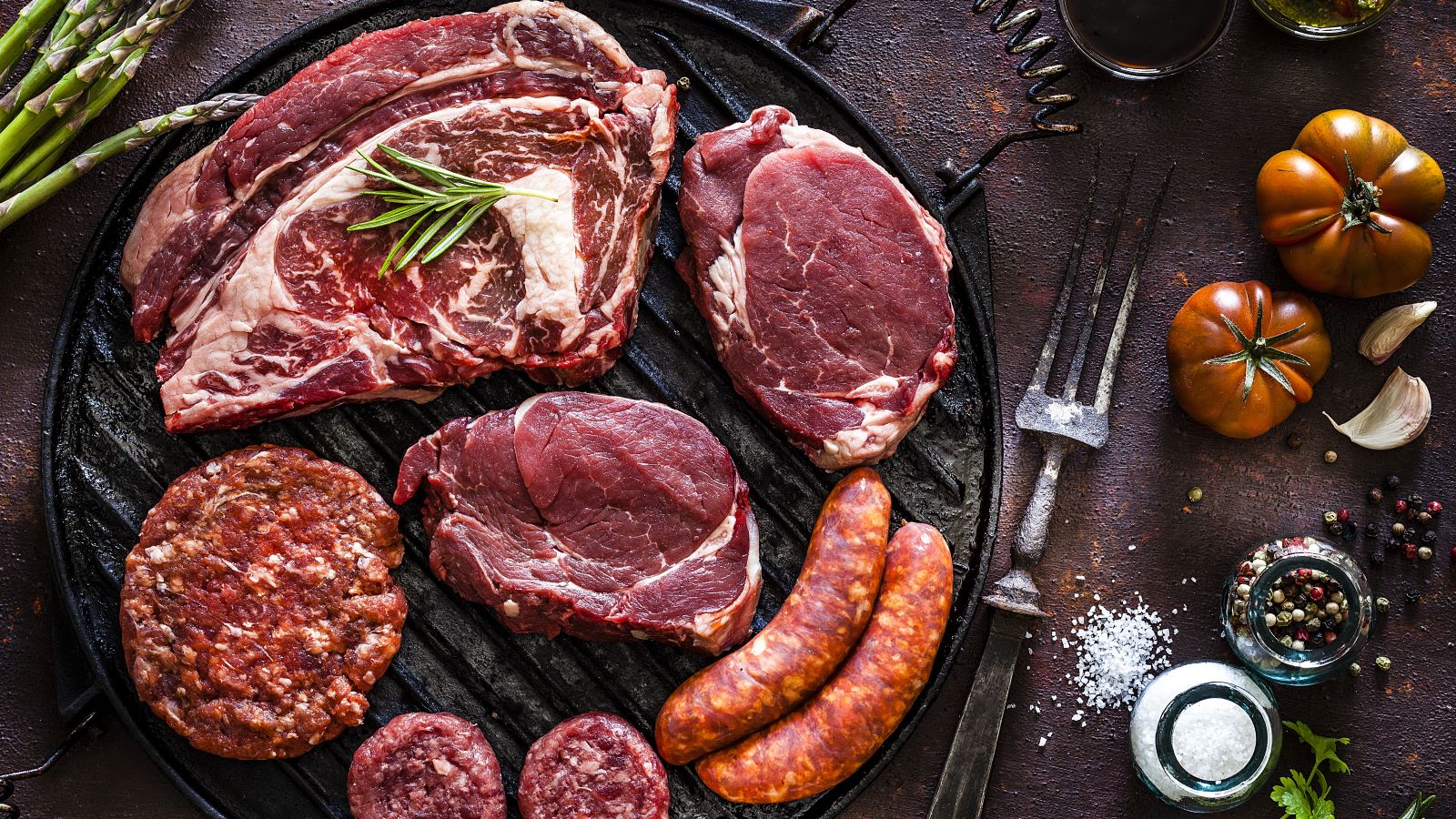<< Back
Is Red Meat Bad for Your Heart?

May 08, 2025
Burgers, steaks, and other red meat can be a delicious part of your diet — but how much is too much for your heart?
We asked Brad Biskup, PA-C, a lifestyle and cardiovascular medicine specialist at the Hartford HealthCare Heart & Vascular Institute, to explain the connection between red meat and your heart.
Why does red meat get a bad rap?
You’ve probably heard that red meat isn’t good for your heart – but do you know why?
“Red meat, especially the fatty cuts, tend to be high in saturated fat,” says Biskup. “This raises the LDL (bad) cholesterol in your blood, which can lead to clogged arteries and heart disease.”
But saturated fat isn’t the only problem.
“Red meat is very inflammatory – not only in the intestines, but also the arteries. In total, this inflammation can cause a variety of different diseases ranging from colon cancer to atherosclerosis or stroke.”
And processed meat can be even worse.
The price tag on processed meat might look more appealing, but the health benefits aren’t.
“Even in small amounts, processed meat is actually worse for your heart than red meat,” says Biskup. “Just 50 grams per day of processed meat – or about one hot dog – can increase your risk of heart disease by as much as 18%. The same amount of unprocessed red meat would increase your risk by only about half of that.”
And if that’s not enough to keep you from reaching for the bacon?
“Processed meat is also extremely high in sodium and nitrates, which can both raise your blood pressure,” Biskup adds.
> Related: Is the Carnivore Diet Actually Healthy?
How much red meat is too much?
Quick sigh of relief – you don’t have to cut red meat out of your diet completely. But if you’re a meat lover, it might be time to cut down.
“Ideally, the average person shouldn’t be eating red meat more than twice per week,” Biskup cautions. “I’d even take it an extra step and choose a very lean cut, raised without antibiotics or any additives.”
But pay attention to portion sizes. When it comes to steak, it’s easy to get carried away.
“A portion of red meat should be about four to six ounces cooked. A great way to monitor this is to eat a steak or hamburger that’s about the size of your palm, which is typically close to four ounces,” says Biskup.
Sound impossible to stick to? Try supplementing your diet with other protein sources like chicken breast or fish.
The silver lining: Red meat does have some benefits.
Despite its reputation, red meat can offer some nutritional value.
“It shouldn’t make up the bulk of your diet, but in small doses, it can be healthy,” says Biskup. “It’s obviously rich in protein, but it also contains iron, zinc and vitamin B12, which are all important.”
But you don’t have to rely on red meat alone for any of those.
“There are plenty of other foods out there that offer the same benefits, without the saturated fat. The key is to have a well-rounded diet and include plenty of variety,” Biskup notes.
> Want more health news? Text StartHere to 85209 to sign up for text alerts
Try choosing these 5 foods instead of red meat.
Not sure where else to get your protein?
“There are countless protein options that aren’t just delicious, they’re also good for your heart,” Biskup says.
Try these alternatives:
- Poultry: Skinless chicken or turkey are leaner protein options, with less saturated fat than red meat. The white meat has less fat than dark meat, but either are far lower in fat content than beef. They’re also versatile options that you can swap into any of your favorite recipes.
- Fish: Fatty fish like salmon and mackerel are packed with heart-healthy omega-3s. These are great for lowering cholesterol – and your risk of heart disease.
- Legumes: Plant-based protein sources like beans, lentils and chickpeas are high in fiber, and much less inflammatory for the body.
- Nuts and seeds: Almonds, walnuts, chia seeds and flaxseeds are packed with healthy fats and protein, and are some of the best options to reduce blood sugar and diabetes risk. Try adding these to salads or smoothies for a quick boost.
- Soy products: Trying to avoid meat in general? Tofu, tempeh and edamame are considered ‘complete’ protein sources, meaning they provide all nine essential amino acids.
“These simple food swaps can make a huge difference in your diet, without leaving you missing your favorite foods,” says Biskup.
So next time you’re at the grocery store, try adding a few heart-healthy options to your cart. Your heart will thank you for it!